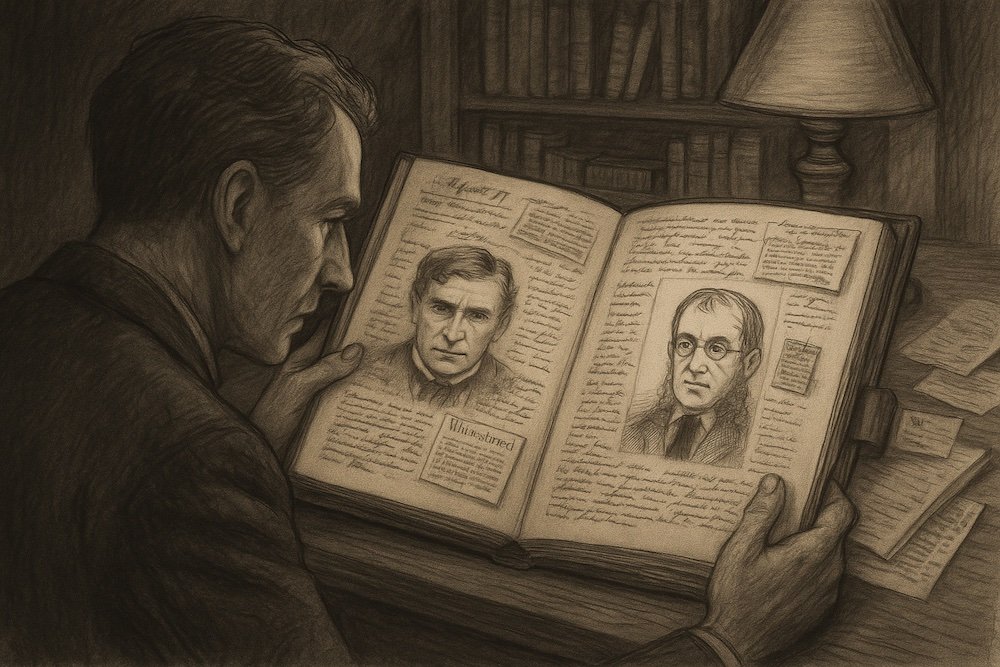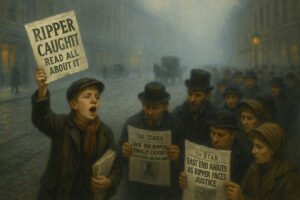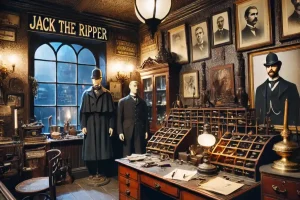The story of Jack the Ripper is a riddle shrouded in fog. Thick, disorientating, lingering above the streets of Whitechapel. The Ripper murdered at least five women in London’s East End in the autumn of 1888 before vanishing without a trace, leaving behind a legacy of eternal infamy.
But here’s the catch. We still don’t know who he was.
Perhaps this is precisely what keeps people hooked. The absence of an answer. The unanswered letter, the unfinished case file, the killer who managed to slip the noose. “Jack the Ripper” is just a name — an alias plucked from one of his taunting letters.
But behind the nickname must have been a man. A face. A motive. A monster in plain sight.
This article unmasks four of the most compelling Jack the Ripper suspects, examining who they were, what their motives could have been, and the fate they met.
Our Jack the Ripper Walking Tour approaches this chilling chapter of history with curiosity and respect, delving deeply into the lives of the victims, illuminating their humanity, and giving voice to their forgotten stories. We invite you to explore the facts, retrace the steps, and examine the suspects. Equipped with a detailed case file, you’ll sift through evidence, timelines, and theories as we walk the very streets where these haunting events unfolded.
Jack The Ripper Suspects
Francis Craig
Historically, Francis Craig was never seriously considered a suspect in the Jack the Ripper case. Only recently has his name emerged through modern theories, driven largely by amateur researchers intrigued by his unusual proximity to the murders. Craig was a prominent journalist in Whitechapel at the time, notably covering the Ripper murders, leading some to speculate whether he had placed himself deliberately at the heart of the investigation.
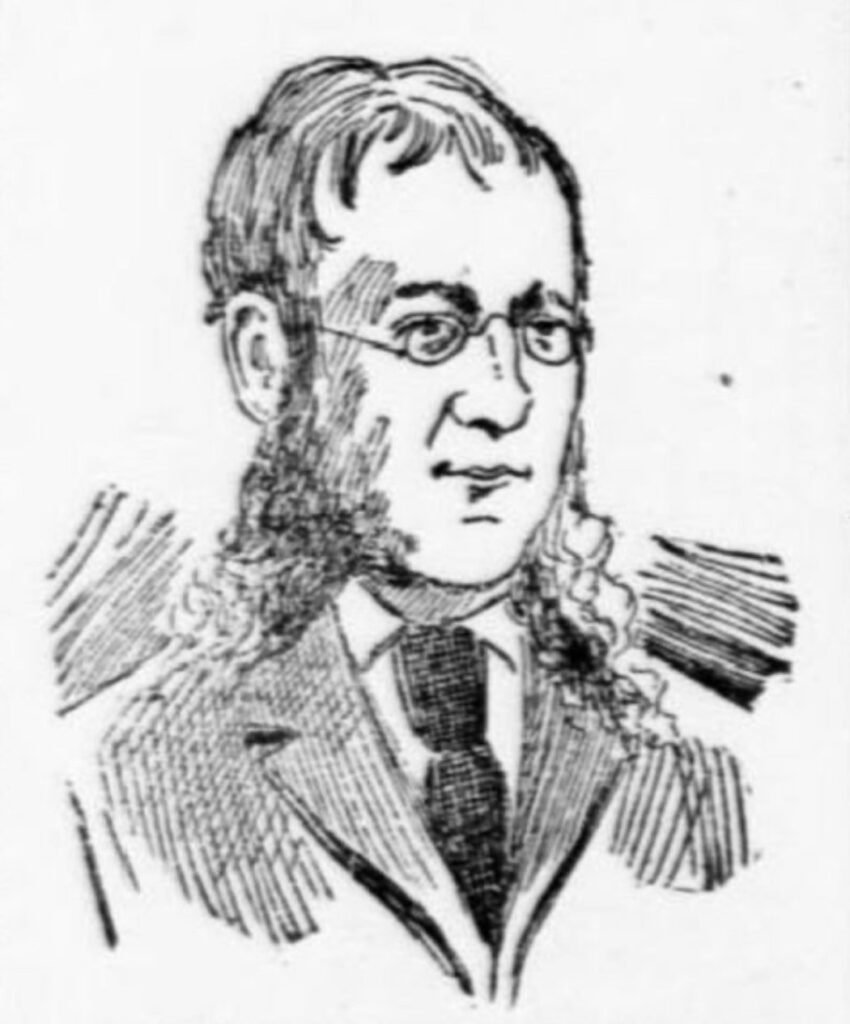
The most controversial claim about Craig involves his possible marriage to Mary Jane Kelly, the Ripper’s final and most infamous victim, under the alias Elizabeth Weston Davies. This speculative connection fuels the theory that Craig was motivated by personal betrayal. According to this narrative, Craig discovered Kelly’s hidden life as a prostitute and murdered her in revenge, subsequently killing others to mask his true motive.
While dramatic, this theory remains speculative, with no definitive historical evidence confirming Craig’s involvement in the gruesome Whitechapel crimes.
Carl Feigenbaum
Carl Feigenbaum frequently surfaces among the most likely suspects for Jack the Ripper, intriguing investigators due to his darkly compelling background. A German merchant sailor notorious for erratic behaviour and disturbing confessions, Feigenbaum openly claimed to have murdered and mutilated women, prompting even his own lawyer to suspect he was indeed the infamous killer.
Records confirm Feigenbaum’s presence in Whitechapel precisely during the timeline of the Ripper murders, and his documented habits included frequenting the area’s brothels. Eventually moving to America, Feigenbaum rekindled his violent tendencies when he murdered Julianna Hoffman in New York, a crime for which he was executed by electric chair.
Notably, Ripper expert Trevor Marriott considers Feigenbaum his top suspect, even producing an e-fit from US prison records indicating Feigenbaum’s appearance might closely match the dark-complexioned, shabby-genteel description given by Annie Chapman’s eyewitness, Elizabeth Long.

Feigenbaum’s chilling trajectory raises the haunting possibility that Jack the Ripper’s murderous spree only ended because the killer himself faced justice across the ocean, far from the streets of Whitechapel. Nevertheless, the debate continues, with discrepancies and theories fueling an enduring historical mystery.
Walter Sickert
Walter Sickert, a prominent German-born artist who settled in London, is frequently named among Jack the Ripper suspects due to eerie parallels found in his artwork. Sickert often painted scenes featuring prostitutes and disturbing, violent imagery that bore uncanny resemblances to the Ripper’s gruesome crime scenes. Some researchers, including bestselling author Patricia Cornwell, argue these visual echoes weren’t coincidental, suggesting Sickert subtly embedded clues or even confessions within his canvases.
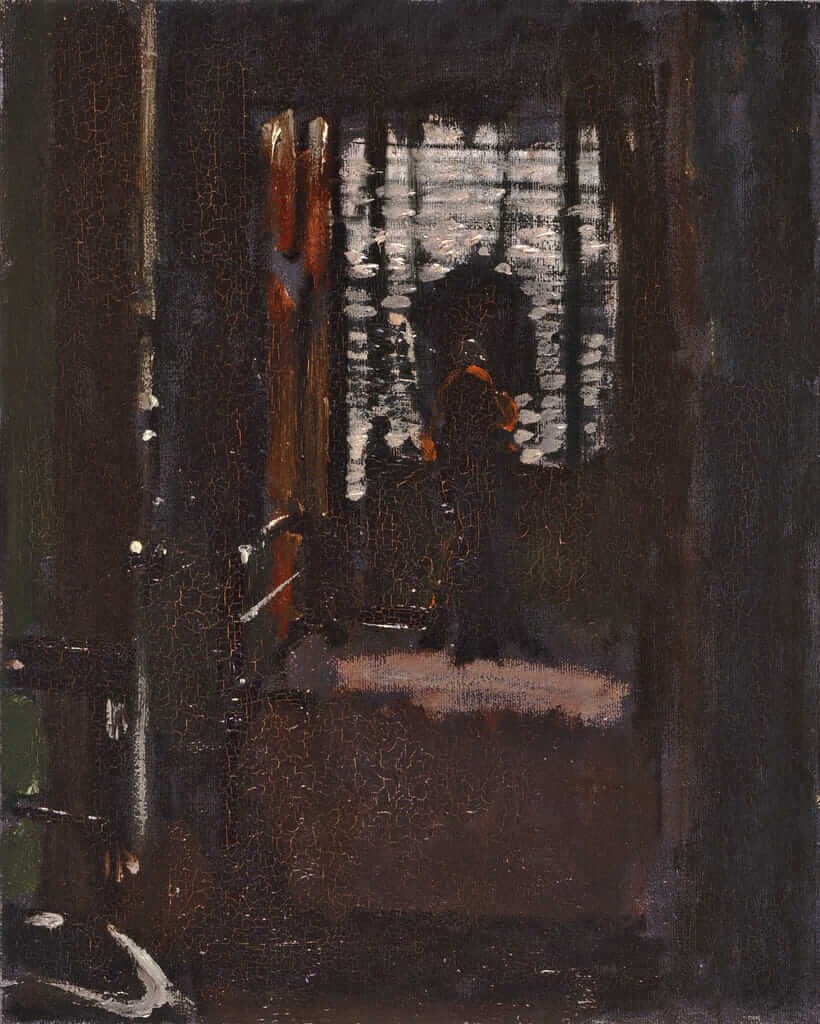

Sickert believed he once lodged in a room previously occupied by the Ripper himself, based on a story told by his landlady. This obsession led him to paint “Jack the Ripper’s Bedroom,” capturing the room’s dark and melancholy atmosphere. Sickert’s suspected impotence adds another troubling layer to his potential guilt. The theory goes that the Ripper’s violence stemmed from sexual frustration and rage—traits possibly mirrored by Sickert’s medical history, following surgeries that reportedly left him impotent. This alignment of motive, coupled with the unsettling themes present in his paintings, enhances the plausibility of Sickert’s involvement.

However, Sickert is not broadly regarded as a serious suspect by most Ripper historians. Strong evidence indicates he spent considerable time in France during the critical period of the murders, casting doubt on his presence in London at the crucial times. Furthermore, unlike most other suspects, Sickert lived well into the 20th century—long enough, perhaps, to have been identified if definitive evidence had ever surfaced. Intriguing though his implication may be, Sickert’s connection to the Ripper crimes remains highly contested and circumstantial at best.
Aaron Kosminski
Aaron Kosminski, a Russian-born barber living in Whitechapel, remains a prominent suspect due to compelling circumstantial evidence and aggressive tendencies towards women. Although initially overlooked, later investigations highlighted Kosminski’s violent inclinations and outspoken hatred toward women, traits that fit the psychological profile often attributed to the Ripper.
Notably, modern forensic tests revealed mitochondrial DNA on victim Catherine Eddowes’ clothing linked to Kosminski, reigniting interest in him as a prime suspect. Yet during the original investigations, he was never officially identified as the main culprit. Instead, suspicion grew retrospectively, as later researchers pieced together his troubling history and proximity to the crime scenes.
Kosminski’s life ended in an asylum, committed due to his dangerous mental instability. His access to barber’s blades and proximity to the murders have sustained him as a leading suspect, though definitive proof continues to elude historians, leaving his involvement an intriguing possibility rather than established fact.
Could There Have Been Several Murderers?
Could Jack the Ripper have been more than one man? Trevor Marriott, a former murder squad detective who cites Carl Feigenbaum as his top suspect, argues nonetheless that the gaps between the Ripper murders coincide suspiciously with maritime arrivals and departures, indicating multiple seamen might have been responsible.
Moreover, inconsistencies among the murders raise further doubts about a single culprit. Elizabeth Stride’s murder notably differed from others—occurring at a busy location, with a smaller knife, and minimal mutilation—strongly suggesting another killer entirely. Fresh questions surrounding the identity of Mary Jane Kelly further complicate the case, introducing new motives and potential suspects.
Given these discrepancies and the improbable surgical precision attributed to the killer under extreme conditions, Marriott’s theory compellingly argues for multiple murderers rather than a lone serial killer. The haunting truth might be that the notorious Jack the Ripper legend masks not one monster, but several who stalked the foggy streets of Victorian London.
Who Was Jack The Ripper?
The identity of Jack the Ripper remains tantalizingly elusive, forever shrouded in the mist of history. Technology today might penetrate through this mist, but Victorian London’s investigators simply didn’t have that luxury. All we have left are theories, suspects, and stories. Fragments of a chilling past.
While we may never uncover the full truth, exploring these suspects and their narratives offers a compelling journey into one of history’s darkest puzzles.
Join our Jack the Ripper Walking Tour to delve deeper, reflect on the lives of those affected, and ultimately, decide for yourself: who was Jack the Ripper?

